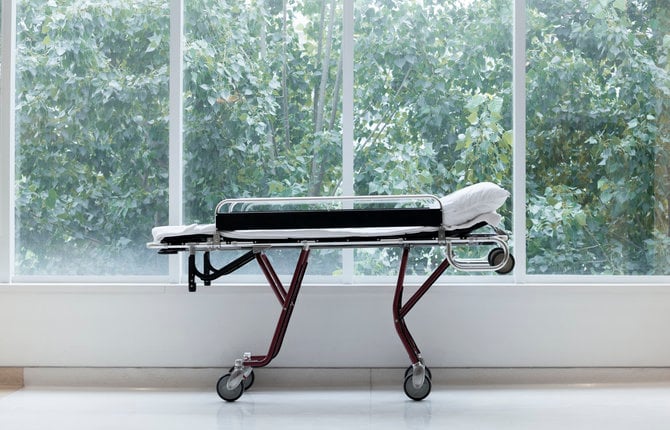
No matter the size or location of your hospital, your crash carts are going to serve a similar function: to provide you with the necessary equipment and medications to respond to cardiac and respiratory emergencies. Though variations will exist depending on hospital policies, type of unit, and typical patient population, you can expect most crash carts to follow the same framework of fundamental supplies.
Let’s do a quick review of standard items that are likely to be found on/ in most crash carts:
- Cardiac monitor/ defibrillator
- Portable suction machine
- Oxygen tank
- Emergency medications
- IV and blood draw equipment
- Airway management supplies
- Procedure trays
Proper organization of your crash cart is important as well, so necessary items are easily found.
Special Considerations for Rural Hospital Crash Carts
Though the basics will be the same, a rural hospital may have challenges regarding stocking and maintaining a crash cart.
Crash carts may not be used often
When something isn’t used often, it is easy to forget about. But many items in a crash cart have expiration dates, from medications to AED pads. In an emergency, you don’t want to be blindsided with expired epinephrine, so it is critically important that rural crash carts are still checked on a regular basis.
This includes not only assessing for expired supplies but ensuring that everything that should be stocked is present and that the defibrillator/ monitor and portable suction machine are charged and working properly.
Budgets may be tighter
When trying to be financially savvy, rural hospitals may need to put some extra thought into what is stocked in their crash carts. For example, is there an approved medication that can be used in a cardiac arrest that is stable for longer than what is currently stocked? Or is there a way to cycle medications or supplies into regular hospital use before they expire?
Advanced airway equipment considerations
In the event that someone who is trained in intubation is not immediately available, rural hospitals should consider stocking supraglottic airway devices, such as the King Airway or Combitube in addition to endotracheal tubes and supplies.
No pediatric crash carts
Large hospitals and emergency rooms are likely to have separate pediatric and neonatal crash carts, but for a rural hospital, this may simply not be cost-effective. Instead, rural hospital crash carts should designate a drawer for pediatric supplies in order to be better prepared to treat patients of all ages.
Lack of in-wall suction
We already discussed the importance of checking the crash cart’s portable suction machine routinely. If this is your primary means of suction, having portable suction machines is even more essential. It must not only be fully charged but the tubing and canister must be undamaged and properly connected. It should be able to provide powerful suction, yet also be able to be adjusted lower suction to protect delicate tissues or for pediatric use.
Though a rural hospital may not have the same number of codes as a city hospital, it still must be prepared to handle any emergency that comes through its doors. A well-thought crash cart is a key component.
Editor's Note: This blog was originally published in May, 2023. It has been re-published with additional up to date content.

















